What are Required Goods?
Required goods (often called “RG”) refer to those goods demanded by a city in order to grow to the next level.
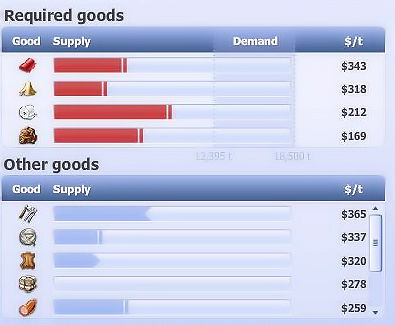 In most cases there will be a total of 4 required goods at any one time (an exception being the very start of a round when the game begins with just 3 available goods).
In most cases there will be a total of 4 required goods at any one time (an exception being the very start of a round when the game begins with just 3 available goods).
The city information screen will indicate which 4 goods the city currently demands. The delivery of these goods is essential to the growth of the city. You will earn both cash and prestige by delivering the required goods.
‘Other Goods’ can still be delivered to the city and can earn you money, however, only Required Goods will generate prestige.
I’ll write more on “RG” at another time in another post. For now, let’s look at which goods we will come across in the first era.
Era 1 Goods:
Era 1 consists of 10 goods. The first era starts with 3 basic raw materials.
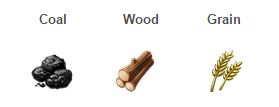
As the basic three are cleared, an additional 7 goods will begin to open up.

Let’s Talk Wagons:
Simply owning engines is not enough to haul goods – you must also have the specific wagons available for each good you want to transport. Yes, wagons cost money…. you may need to remind yourself that in this game especially, you have to spend money in order to make money.
 Coal wagons cost $5,000 each.
Coal wagons cost $5,000 each.
 Wood wagons cost $5,000 each.
Wood wagons cost $5,000 each.
 Grain wagons cost $5,000 each.
Grain wagons cost $5,000 each.
 Boards wagons cost $15,000 each.
Boards wagons cost $15,000 each.
 Cotton wagons cost $15,000 each.
Cotton wagons cost $15,000 each.

Iron wagons cost $20,000 each.
 Iron Ore wagons cost $10,000 each.
Iron Ore wagons cost $10,000 each.
 Cattle wagons cost $15,000 each.
Cattle wagons cost $15,000 each.
 Thread wagons cost $15,000 each.
Thread wagons cost $15,000 each.
 Leather wagons cost $17,500 each.
Leather wagons cost $17,500 each.
Note that the wagon prices are for each wagon. If you have upgraded Swallows, you will need 3 wagons for every train. This can quickly become a challenge during era 1 when cashflow is tight and certain station upgrades top your priority list.
Wagons can be sold for 70% of their purchase price, but this option should be reserved for absolute desperation only. You will require era 1 wagons – and a lot of them – all the way into the end game.
Supplies:
Of these additional 7 goods, 5 require the supply of raw materials in order to produce.
 Boards: accepts Wood
Boards: accepts Wood 
 Iron: accepts Coal
Iron: accepts Coal  and Iron Ore
and Iron Ore 

Cattle: accepts Grain 

Thread: accepts Cotton 

Leather: accepts Cattle 
We can see that leather requires cattle and cattle requires grain… so a fully integrated Leather Schedule should begin at grain. I’ll cover the mechanics of integration at another time. For now, let’s simply look at a short overview as it relates to era 1.
Schedules:
Fully integrated routes should look like this:
The example above assumes the Required Good (RG) we want to deliver is Boards. Simply hauling the boards directly back to the city will cause supply to drop, wait times to go up and negatively affect our earning potential.
Of course, there are times when you will be required to “haul direct” but for the most part this is discouraged for reasons I will outline in another post.
Instead, we stop first at wood and deliver wood to boards at the same time we are collecting boards to cart to the city. This is now a ‘fully integrated’ route.
Boards: accepts Wood 

Schedule: Wood > Boards > City
 Iron: accepts Coal
Iron: accepts Coal  and Iron Ore
and Iron Ore 
Schedule: Coal > Iron > City, and
Iron Ore > Iron > City

Cattle: accepts Grain 
Schedule: Grain > Cattle > City

Thread: accepts Cotton 
Schedule: Cotton > Thread > City

Leather: accepts Cattle 
Schedule: Grain > Cattle > Leather > City
Note that Cotton and Iron Ore are also raw materials that require no supply.

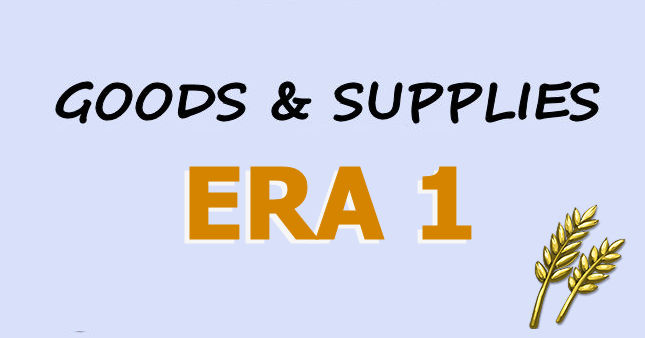




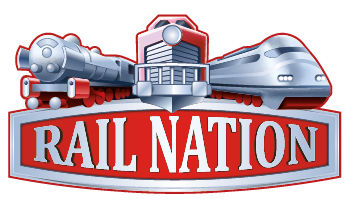


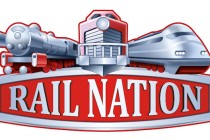

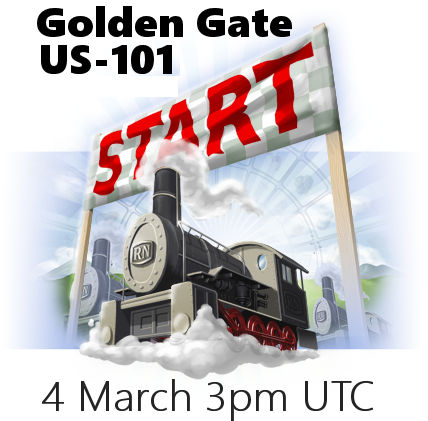
Speak Your Mind